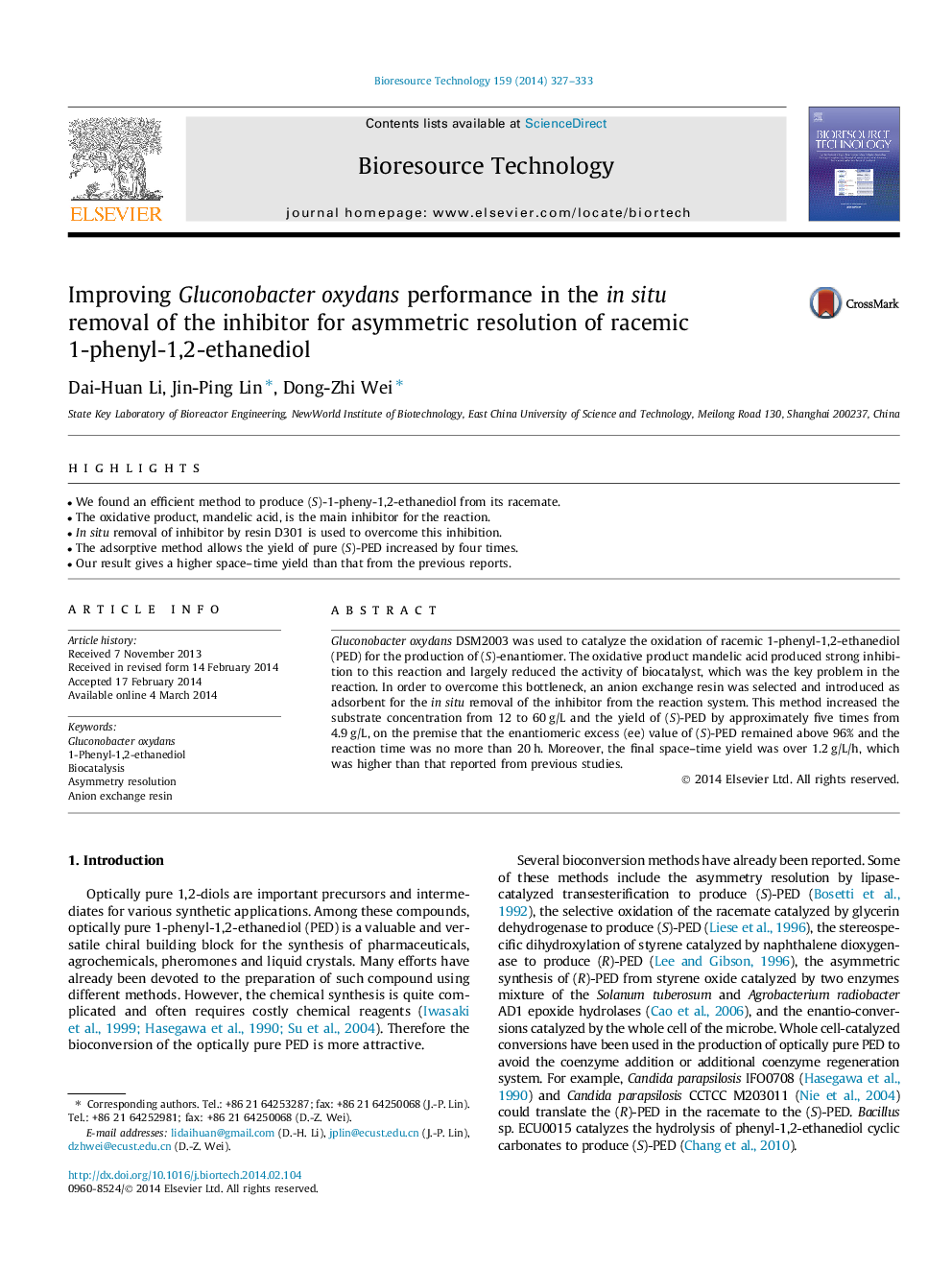| Article ID | Journal | Published Year | Pages | File Type |
|---|---|---|---|---|
| 7078561 | Bioresource Technology | 2014 | 7 Pages |
Abstract
Gluconobacter oxydans DSM2003 was used to catalyze the oxidation of racemic 1-phenyl-1,2-ethanediol (PED) for the production of (S)-enantiomer. The oxidative product mandelic acid produced strong inhibition to this reaction and largely reduced the activity of biocatalyst, which was the key problem in the reaction. In order to overcome this bottleneck, an anion exchange resin was selected and introduced as adsorbent for the in situ removal of the inhibitor from the reaction system. This method increased the substrate concentration from 12 to 60Â g/L and the yield of (S)-PED by approximately five times from 4.9Â g/L, on the premise that the enantiomeric excess (ee) value of (S)-PED remained above 96% and the reaction time was no more than 20Â h. Moreover, the final space-time yield was over 1.2Â g/L/h, which was higher than that reported from previous studies.
Related Topics
Physical Sciences and Engineering
Chemical Engineering
Process Chemistry and Technology
Authors
Dai-Huan Li, Jin-Ping Lin, Dong-Zhi Wei,
